
Piercing the veil
A new exhibition at Buxton Contemporary finds a rich complexity in the shadowy terrain between life and death.
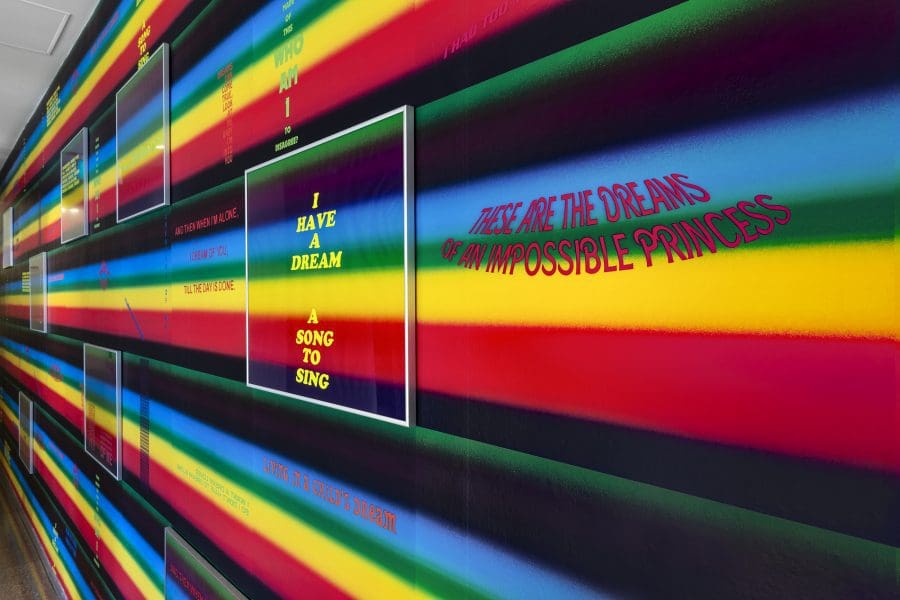
Troy-Anthony Baylis, Nomenclatures display, 2020 SALA Festival, Art Gallery of South Australia, Adelaide. Photography by Saul Steed.
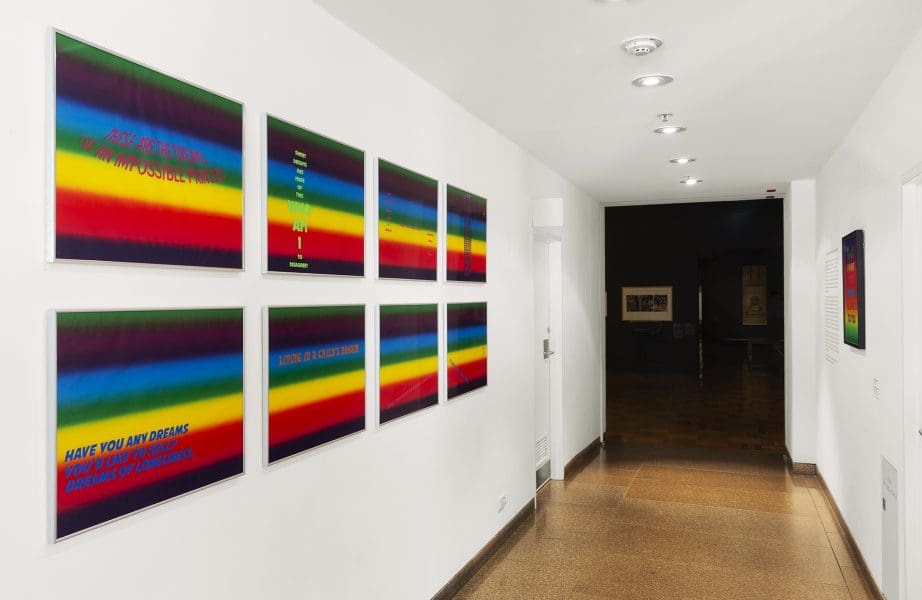
Troy-Anthony Baylis, Nomenclatures display, 2020 SALA Festival, Art Gallery of South Australia, Adelaide. Photography by Saul Steed.
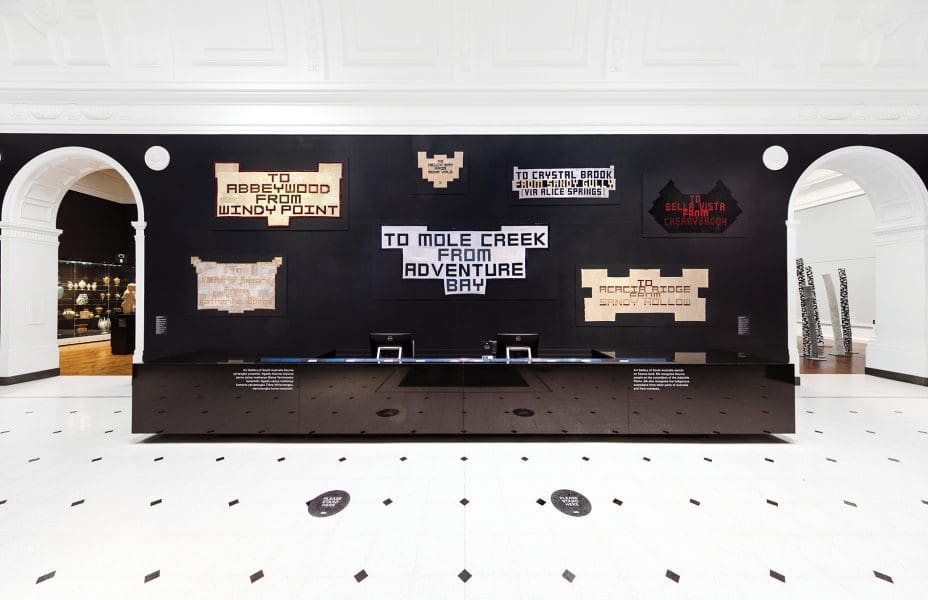
Troy-Anthony Baylis, Nomenclatures display, 2020 SALA Festival, Art Gallery of South Australia, Adelaide. Photography by Saul Steed.

Troy-Anthony Baylis, Anita Bryant Monument 2, 2020, Die-cut stickers on paper record sleeve.
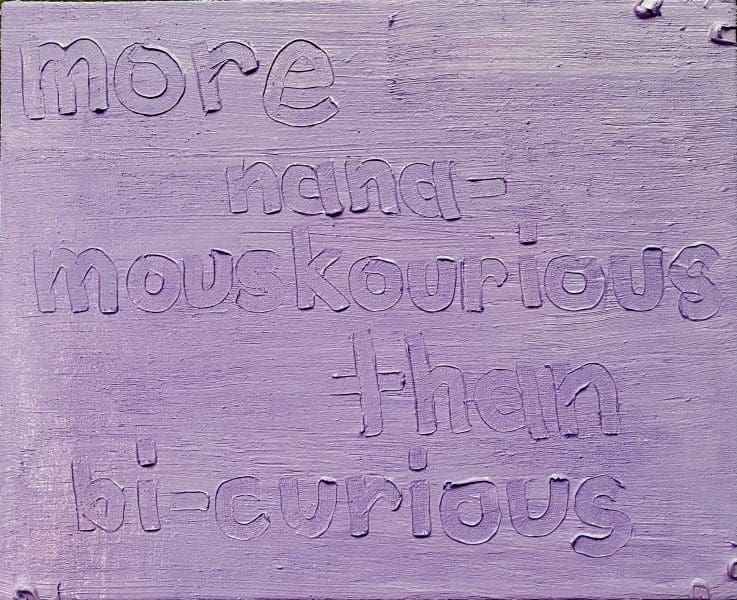
Troy-Anthony Baylis, more nana-mouskourious than bi-curious, 2021, oil on linen.
Queer cultural vernacular suffuses the art of Troy-Anthony Baylis. An avid collector of Minogue music and memorabilia (both Kylie and Dannii), he writes and speaks in song lines in a dual sense— alighting on, say, pop lyrics from Prince to explain the Indigenous concept of the Dreaming.
Sydney-born and Adelaide-based, Baylis has called his new exhibition Yes, I am musical, drawing upon the 1950s term for identifying same-sex-attracted men. But audiences have never had to crack a code to out the artist’s aesthetic, whether it’s his love of vibrant, saturated colour, his skinning and filleting of glomesh handbags, or his Instagram feed with vintage photos of his drag persona Kaboobie, with Dusty Springfield-style blonde beehive wig.
In this new exhibition, Baylis will display new examples of his small, monochromatic ‘immediacy paintings’, with text scratched into the oil while it is still wet. There will be ‘monuments’ to US pop star turned anti-gay campaigner Anita Bryant, repurposing her old record sleeves with chilling quotes that laid bare Bryant’s desire to extinguish queer bodies.
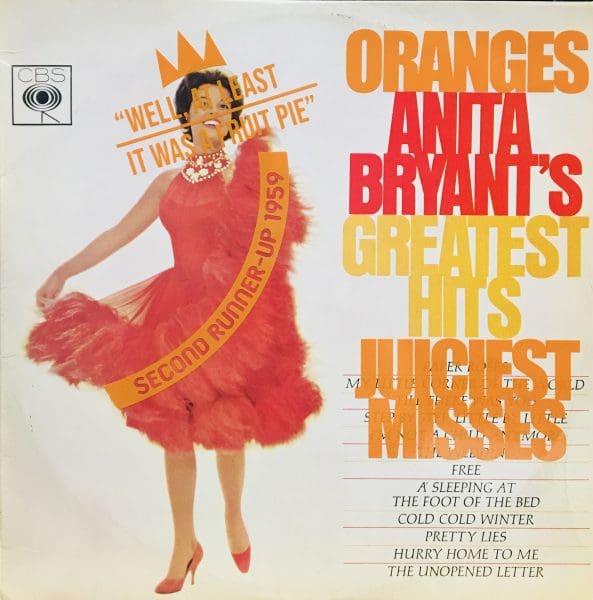
Baylis will also premiere the eighth instalment of his Postcard series, begun in 2010, for which he has repurposed hundreds of glomesh and fauxmesh handbags. He takes the lining out of the bags, cuts off the external wire, then takes a sewing needle to undo the bags by hand and join them back together as seamless surface structures.
The glittery material has been reworked to resemble Aboriginal breastplates or ‘king’ plates, which in colonial times were ‘awarded’ to particular Indigenous people. One now reads in woven text, ‘To Nelly Bay from Mona Vale’, another ‘To Victoria Square from Katherine Gorge’, each imagining a camp coo-ee conversation from one painted sister to another.
Baylis is a descendant of the Jawoyn people of the Northern Territory, although he grew up without access to Indigenous language and culture because his father was a member of the Stolen Generations. “It means that there are certain cultural practices you will never be initiated to,” he says.
“There’s this fantasy of, ‘Just go back to Country and immerse yourself in it’. But that’s not always the case. I’m not afraid of anything but I’m finding ways to connect [with Indigenous culture] in my own time. It’s not about Jawoyn culture what I make, but some of my ideas are still drawn from my spirituality.”
For his recent Nomenclatures installation at the Art Gallery of South Australia, Baylis used strips of painted canvas to weave together the changing place names of South Australian towns: first the Anglicisation of German-origin place names following the passing of the Nomenclature Act of 1917, which responded to anti-German feeling during World War I; then an embroidered overlay of original names of Aboriginal Country.
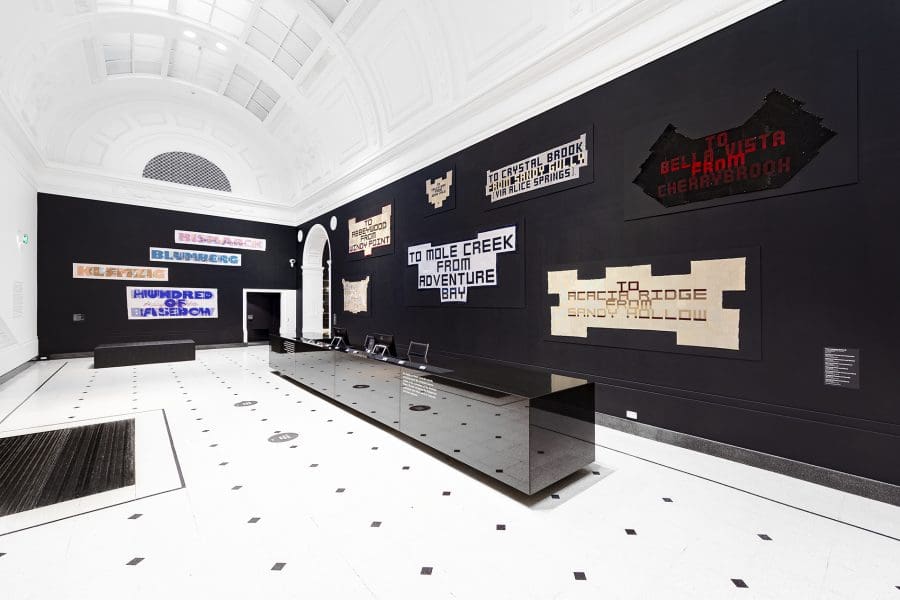
As the inaugural recipient of a Guildhouse Fellowship, Baylis spent a couple of months in Berlin—although, in a normal non-pandemic year, he usually spends time in the arty German city. “The ways in which Germany, and Berlin in particular, deal with their past and keep it present, is so progressive and so inspiring,” he says.
“They’ve been progressive with art and what art and creativity is. I particularly love German architecture. Entire buildings are built to house one work of art. How elevated art is in that society completely inspires me.”
Baylis began calling himself an artist in 1993, when he enrolled in a Bachelor of Arts (Visual Arts) at the Queensland University of Technology. “The work I was doing then, I just didn’t have the ability to see where I fitted into the world,” he recalls.
“What I’m doing now, there is absolute evidence I was doing it then too, it was just a different time, and it wasn’t my time, so to speak. My work was like that of Leigh Bowery back then: I did nightclub performances and I’d dress up.
“I nearly failed university at that time because I didn’t have the reference points, and nobody within the art school had the reference points either.”
Later, Baylis completed a PhD in Indigeneity and drag, and had an epiphany about the transformative power of art when reading the writings of US intersectional feminist bell hooks and French-West Indian political philosopher Frantz Fanon, a “hero of decolonisation”.
Baylis does drag only rarely these days. “I need a bit more Spakfilla these days,” he laughs. “I’m not a makeup artist. Fifteen minutes and I’m off. Drag in my days came out of all sorts of places, it was cheap and convivial. There was something really interesting about these sparks that would happen.
“A lot of drag these days—and it’s part of the double- edged sword of something amazing like [RuPaul’s] Drag Race—it seems that unless you’ve got a business plan and a big budget, you’re not going to make it in drag any more.”
Yes, I am musical
Troy-Anthony Baylis
Hugo Michell Gallery
6 October—6 November
This article was originally published in the September/October 2021 print edition of Art Guide Australia.